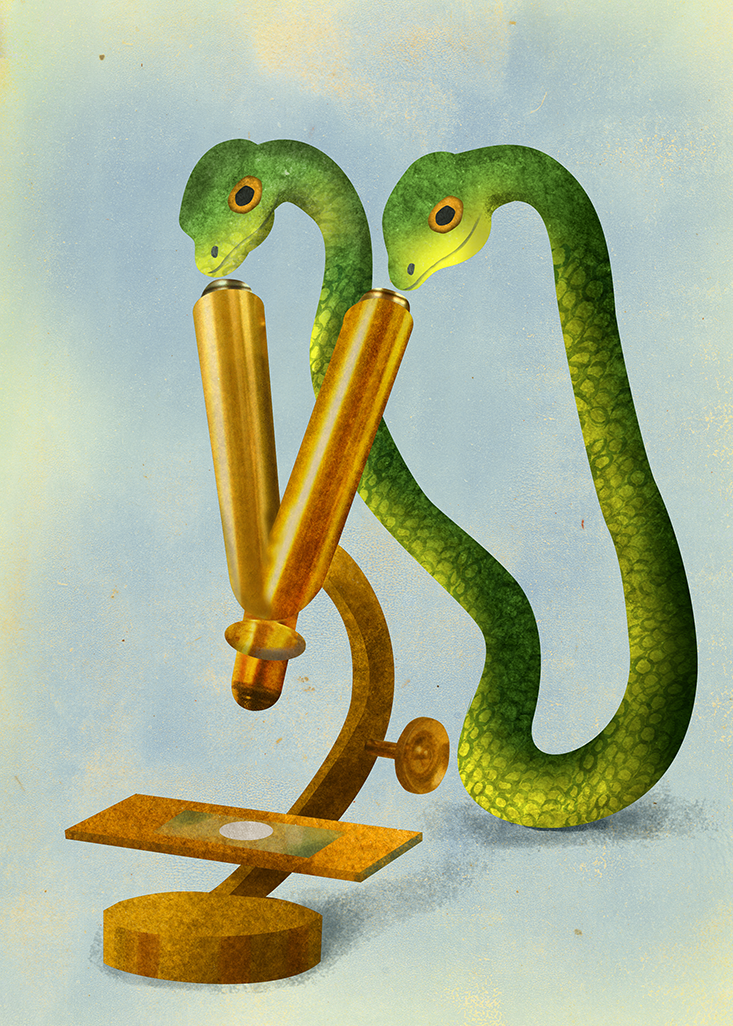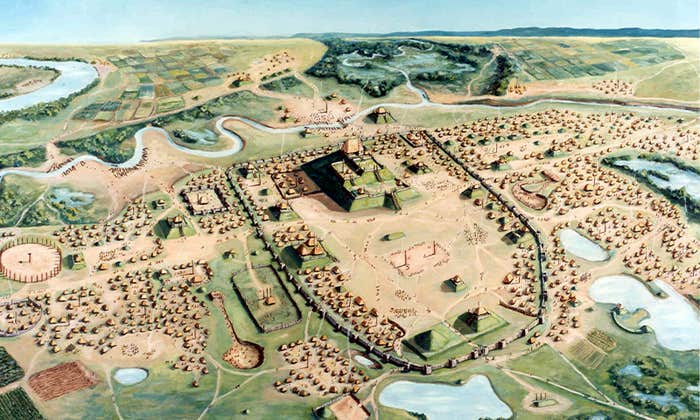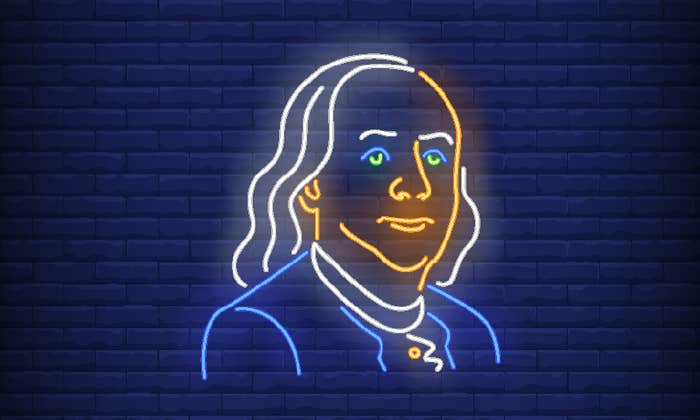Finding regularity in nature is the bread and butter of science. We know that reptiles lay eggs, while mammals bear live young; the Earth revolves around the sun every 365.25 days; electrons glom onto protons like bears onto honey. But what if some oddity seems to defy the laws of nature, like the platypus, an egg-laying mammal? What about an anomaly like a two-headed snake? Or a newborn baby who seems to be neither boy nor girl, but something in between?
These questions fascinated the founding fathers of science, and their attempts to explain such rarities and marvels helped shape modern science. In fact, nearly all the great philosophers and scientists of 17th century Europe—Descartes, Newton, and Bacon notably among them—were obsessed with anomalies. If they couldn’t explain the unlikely—a solar eclipse, a comet hurtling toward Earth, a narwhal tusk (was it a unicorn?)—all bets were off about an underlying explanation of nature.
Lorraine Daston, executive director of the Max Planck Institute for the History of Science in Berlin, has spent decades studying the emergence of modern science. One formative experience, she says, was a graduate-school seminar where she and fellow student Katharine Park noticed something strange. The philosophers they studied in their class on 17th century metaphysics—Bacon, Hobbes, Leibniz, Locke—were obsessed with monstrous creatures. Their professor didn’t care, nor did the other students, so Daston and Park carved out their own intellectual turf and wrote a landmark scholarly article about monsters. Years later they expanded the study and in 1998 published the monumental history, Wonders and the Order of Nature, 1150-1750.
Nautilus called on Daston to learn how the unlikely in nature, strange and unexplainable occurrences, were viewed at the dawn of science. In conversation Daston has a dazzling ability to leap across centuries, ranging over high culture and low, from Aristotle to The National Enquirer. Her insights into history illuminate the practice of science today. Daston spoke to Nautilus from Berlin.
Centuries ago, monsters seemed to embody the unlikely in nature. Why were early philosophers and scientists so fascinated by monsters?
They were interested in exceptions to the rule. One has to keep in mind that the 16th and 17th centuries were times of extraordinary religious, economic, and intellectual upheaval. From both the Far East and the New World, Europe was deluged by novelties of all kinds, such as animals that no one could possibly imagine, like birds of paradise and armadillos. On the religious front, monsters were seen as portents foretelling the apocalypse—the Second Coming. It was also a time of intellectual revolution. Copernicus published his book on the solar system in 1543. That same year, Andreas Vesalius published his book on the anatomy of the human body.
For European thinkers in the early 17th century, the scientific ground on which they stood was extremely unstable. Everything was changing, and people like Francis Bacon realized it was possible that the best minds over the last two millennia had been dead wrong about everything. He used monsters and other marvels as a kind of intellectual hygiene to jolt people out of their assumptions about the natural world. In Aristotelian natural philosophy, monsters and other anomalies were seen as outliers, to be acknowledged but not explained. Bacon turned the tables and used monsters as a weapon against the ruling orthodoxy in natural philosophy and natural history.
Were monsters seen as frightening?
That was certainly one view. Birth deformations, like two-headed cats and conjoined twins, were terrifying but also electrifying. They seemed to be a telegram from God announcing the end of time, the end of the world. But in another context, they were seen as wonders—not as terrifying, but astonishing, a sign of the fecundity, the creativity and variety of nature. So the emotional response could flip over from one moment to the next, from horror to wonder and back again. In one early 17th century sermon in an English parish about the birth of conjoined twins, the minister harangued his parishioners not to treat this monstrous birth as a wonder to be gawked at and admired, but as a horrifying portent that they should repent immediately.
How did this struggle to explain unlikely occurrences relate to the birth of modern science?
These anomalies were seen as challenges. By the 17th century, it was pretty clear that Aristotelian natural philosophy was doomed. The question was what would replace it, and there were lots of fiercely competing theories. Monsters and other marvels offered extreme cases. Could your revision of natural philosophy explain such things? This made monsters and wonders more prominent in the late 16th and early 17th centuries than they’ve ever been before or since in the history of science. For the most part, science is interested in the regularities of nature—and that makes sense. Why would you devote time, thought, and ingenuity to explaining what only happens once in a blue moon? But in this period, anomalies very briefly took center stage when it came to scientific explanations.
They seemed to be a telegram from God announcing the end of time, the end of the world.
What about the founders of modern science—Galileo, Descartes, Newton, Leibniz? What was their interest in nature’s oddities?
Descartes thought that if you’re putting forward a new theory of everything, you should be able to explain these outlier cases. He even thought you could explain what was considered an old medieval marvel, in which the corpse of a murder victim would bleed again in the presence of the murderer or the murder weapon. Leibniz sent a report of a dog that could talk to the journal of the Paris Academy of Royal Sciences. It could bark out six words in French, including “chocolat.” Everyone was trafficking in marvels in the 17th century.
You’ve described this transitional period between pre-modern and modern science as “the great age of wonder.” What kinds of wonders were scientists finding?
Let’s take astronomy. In 1609, Galileo turned his telescope to the heavens. He discovered the surface of the moon was pockmarked by craters. He discovered four moons of Jupiter, which he described as “marvels.” He discovered the phases of Venus. He published these findings in 1610, and it caused a sensation. This book sold like hot cakes. Rumors were even more salacious in European gossip circuits. There were spectacular novelties coming from the New World and also from China and the Far East, streaming into the markets of London and Amsterdam.
So this was partly the result of new global commerce.
A lot of these marvels could have been seen as commodities. When we think of the ancestors of our museums—the “cabinets of curiosity,” wunderkammern—they are chock-full of marvels and monsters of all kinds. We wouldn’t see some of these things as marvels, such as paper money from China. But from the standpoint of late-16th-century Europeans, the concept of accepting paper money instead of gold or silver was almost as much a marvel as an armadillo.
Wunderkammern is usually translated as “cabinets of curiosity,” but isn’t “cabinets of wonder” a better translation?
“Chambers of wonders” would be the most literal translation.
Do “wonder” and “curiosity” mean the same thing?
No. What’s distinctive about this period is that wonder and curiosity are yoked together. Aristotle had said wonder is “the beginning of philosophy,” but the aim of his natural philosophy was to make wonder disappear as soon as possible. It was a sign that you were ignorant at best, or at worst you were timorous or fearful. Since ancient times, curiosity was associated with vice rather than virtue, with people who meddled in other people’s business. You were meddling in secrets that shouldn’t concern you—the secrets of Nature, of God, of the Prince.

Of course, the classic cautionary tale about curiosity is Adam and Eve, who tasted fruit from the forbidden Tree of Knowledge. It was the original sin.
Absolutely. And then what happens in the 16th and 17th centuries is fascinating. Curiosity goes from being a real vice to a virtue. It becomes a form of audacity. “Dare to know” becomes a motto that natural philosophers are proud to make their own, and wonder goes from being a sign of ignorance to a desire for knowledge. The clearest expression of this is in Descartes’ 1649 treatise Passions of the Soul. First wonder and then curiosity are engaged, and the two work together. Wonder is like the spark that ignites the fuse of curiosity. Curiosity then marshals the intellect and all the senses in the quest to find the cause of wonder.
Since ancient times, curiosity was associated with vice rather than virtue, with people who meddled in other people’s business.
Tell me about the wunderkammern, these cabinets of wonder. What did people collect?
What didn’t they collect? In order to qualify for a wunderkammer, the objects had to be unusual. So they could simply be exotic—such as paper money from China or pointed toe slippers from Turkey. Or wondrous because they’re mistakes of nature, like two-headed snakes. Or they could be wondrous because they are virtuoso works of art—a thousand faces carved upon one cherry stone. The ways they’re displayed are intended to accentuate the hodge-podgery of it all, to accentuate diversity, miscellany, and also plenitude. Maybe you’ve seen pictures of these floor-to-ceiling displays, which have everything from Ceylon shields to a stuffed Laplander to a crocodile hanging from the ceiling. The aim of a wunderkammer, especially a prince’s collection, was to overwhelm you. They were often shown to ambassadors, to impress the ambassador with the power of the prince. Today’s museums have a lot in common with these early wunderkammern. They’re meant to astonish us, to jolt us out of our everyday thoughts: “Fancy seeing that!” And they’re meant to provoke our curiosity, to make us inquisitive about some new class of objects. Probably only in museums is that alliance of wonder and curiosity still preserved in its full intensity.
Yet from our modern perspective, this mix of man-made objects and oddities of nature is strange. The distinction between nature and art seems so obvious today.
It would also have been obvious in the 14th and 15th centuries. So it’s really interesting what happens in the early modern period. Monsters and other marvels were used as catalysts to accelerate new theories of knowledge. Again, it’s Bacon’s formulation. These marvels are experiments that Nature is performing on herself. And if we want to create a new way of tempering steel or dying fabric, we should look very closely at these experiments that Nature is performing on the margins of its regular order. Then we should imitate Nature.
Was Nature seen as God’s great artistic creation?
The more devout would have formulated it that way. And for 16th and 17th century philosophers, Nature is allowed to joke. What we would now call a fossil—the impress of a fern in rock—might have been interpreted in the early 17th century as a joke of Nature. “Oh, what the heck! I’m tired of creating leaf-like forms in trees and plants. Let’s try it in stone.” But God is not allowed to joke. So Nature had the freedom to experiment, which was exactly what the natural philosophers needed Nature for. To suggest that God was experimenting would have bordered on the blasphemous.
Today we categorize and collect objects of nature and art in entirely different ways. Paintings and sculptures go in art museums, while seashells and stuffed animals go in natural history museums. Apparently those distinctions were not made in cabinets of wonder.
It was all one great, glorious miscellany. I think you can date the end of the age of wonder precisely by that division of labor between art museums and natural history museums in the mid-to-late 18th century.
Monsters and other marvels were used as catalysts to accelerate new theories of knowledge.
Why did wonder go out of fashion?
From the scientific standpoint, if you look at the annals of the first scientific societies—the Royal Society of London and the Paris Academy of Royal Sciences—the first six to 30 years are filled with reports of monsters and marvels. They read like Ripley’s Believe It or Not or The National Enquirer. Sometimes I suspect the reporters of The National Enquirer go back to the early scientific journals for their ideas. Bacon thought we have to look at these anomalies if we’re really going to discover the deep secrets of nature.
But by the 1730s and ’40s, scientists had wearied of anomalies and began to feel it was time to return to the main business of science, which was to explain regularities. There was also ecclesiastical uneasiness with these marvels because they were objects of religious fervor. This was the time of the Reformation and Counter-Reformation, and new sects were sprouting up like mushrooms. The leaders of these new sects would often point to marvels as signs that God was on their side.
You’ve used the term “natural philosophy” to describe the work of these early thinkers. Is this another term for “science”?
I’m not just being a finicky historian. I don’t want to equate natural philosophy with what we know today as modern science. The institution of science happens much later in the 19th century, so it was rare to make a living practicing science. Natural philosophers also asked bigger questions than scientists would. Newton thought it was perfectly in order to speculate on the relationship between gravitation and the nature of God. This would be completely unacceptable to a modern scientist. So natural philosophy is the ancestor of modern science, but they are not identical.
We’ve been talking about wonders and marvels. There’s also the different emotional experience of “wonder” itself, which is closer to awe. Does wonder have its own history?
It does. We in the modern period associate wonder with a childlike stance, a freshness of vision. But in the medieval and early modern period, there’s nothing childish about it. Wonder could very easily tip over into horror or terror. There’s a kind of Bermuda Triangle of terror, horror, and wonder, which have deep subterranean connections with each other. They all involve the perception that something extraordinary has happened. And they wobble. They can easily transmute from one into the other.
Wonder is tinged with awe—which can put it into the realm of the supernatural, perhaps even the divine—and it’s also tinged with fear. It’s an uncomfortable emotion. You don’t have wonder. Wonder has you. It grabs you by the lapels and shakes you. Wonder is also associated with fear, and it’s very embarrassing for a learned person to be seen as fearful. Wonder is for the ignorant, the unlettered. You, the university professor of natural philosophy, wish to show that you are not terrified of an eclipse because you can explain it, even predict it.
So this is really a question of what can be explained, which is the essence of science.
And it’s really interesting to see what happens during the mid-18th century, when natural philosophers begin to abandon the marvels and return to the regularities. They transform wonder from the astonishing and the inexplicable to that which they explain. There’s a concerted attempt to transfer wonder from monstrous births to very ordinary and even disgusting objects, like insects. There’s a whole genre of natural history involving the marvels of insects, which is an attempt to domesticate the emotion of wonder for things we can explain.
You don’t have wonder. Wonder has you. It grabs you by the lapels and shakes you.
It’s extremely difficult to get into the mindset of people who lived 300 years ago, to overcome our tendency to impose our own biases on the past. It would be easy to write them off as ignorant or uneducated. Is that part of your work, to say they were just different, not lesser, than we are today?
That’s very well put. The whole premise of doing the history of pre-modern science is that these were extraordinarily intelligent and often courageous people who, without any of the institutional props of universities or laboratories, were trying their damnedest to figure out how the world works, at the expense of their fortunes, often their health, and sometimes their lives.
The Scientific Revolution was remarkable. But some people think we’ve lost something in our current age of rationality and science. They talk about how the world has become “disenchanted,” that we’ve lost the capacity to be swept away by wonder. Do you see that as a problem?
I don’t. It’s very difficult to square this morose and elegiac discourse about the disenchantment of the world, which was very common in the early 20th century, with any working scientist who is afire with enthusiasm and delight and wonder about what he or she is working on. I mean, why do these people voluntarily work 80 hours a week?
In the epilogue of Wonders and the Order of Nature, you quote William James, the great philosopher and psychologist, who lived a century ago. He believed science would be renewed by what he called “the dust-cloud of exceptional observations.” He was also fascinated by spiritualism. He and his small cohort of scientists actually investigated seances, which most scientists scoffed at. Did James have a point?
He absolutely had a point. He wrote about “radical empiricism.” That’s what the interest in wonders was. It was the desire to exclude absolutely nothing from the purview of inquiry—not to narrow one’s gaze for expedience or orthodoxy, but to accept the world as it presents itself to us.
I think all science involves a receptivity to the anomalous, perhaps not in the splashy sense of a marvel, but simply an eye attuned to, “Oh, that’s odd, that hasn’t happened before.” There’s the famous story of penicillin’s discovery. No doubt others before Alexander Fleming saw mold growing in petri dishes, but he was receptive to the oddity of it, the strangeness of it, and pursued it. And that story is told over and over again in the annals of scientific anecdote. It’s a kind of observational openness to small deviations from the norm and the willingness to hunt them to ground.
The scientific sensibility is now attuned to objects that most of us would not consider intrinsically wondrous in the way a two-headed snake would be. It’s as if scientists are connoisseurs of marvels, just as real gourmets with refined silver palettes are looking for esoteric combinations of flavors. Someone without a refined palette might be swept away by a fairly ordinary meal. Scientists are looking for much more unusual and esoteric combinations.
Steve Paulson is the executive producer of Wisconsin Public Radio’s nationally syndicated show “To the Best of Our Knowledge.” He’s the author of Atoms and Eden: Conversations on Religion and Science (New York: Oxford University Press, 2010).


























